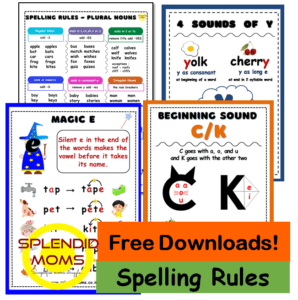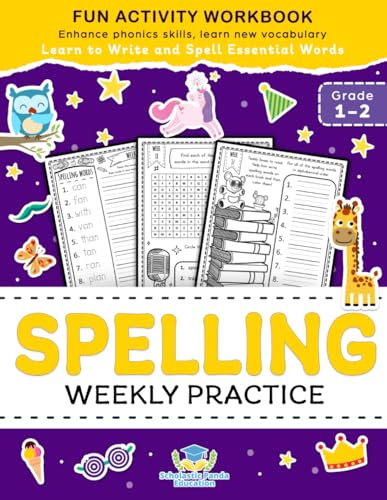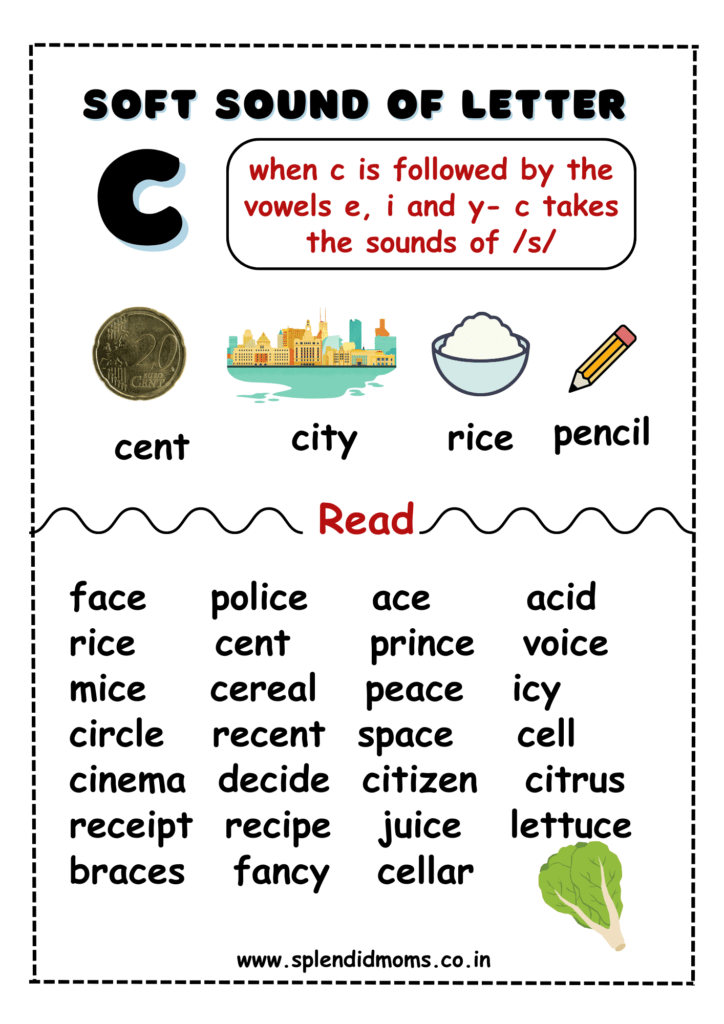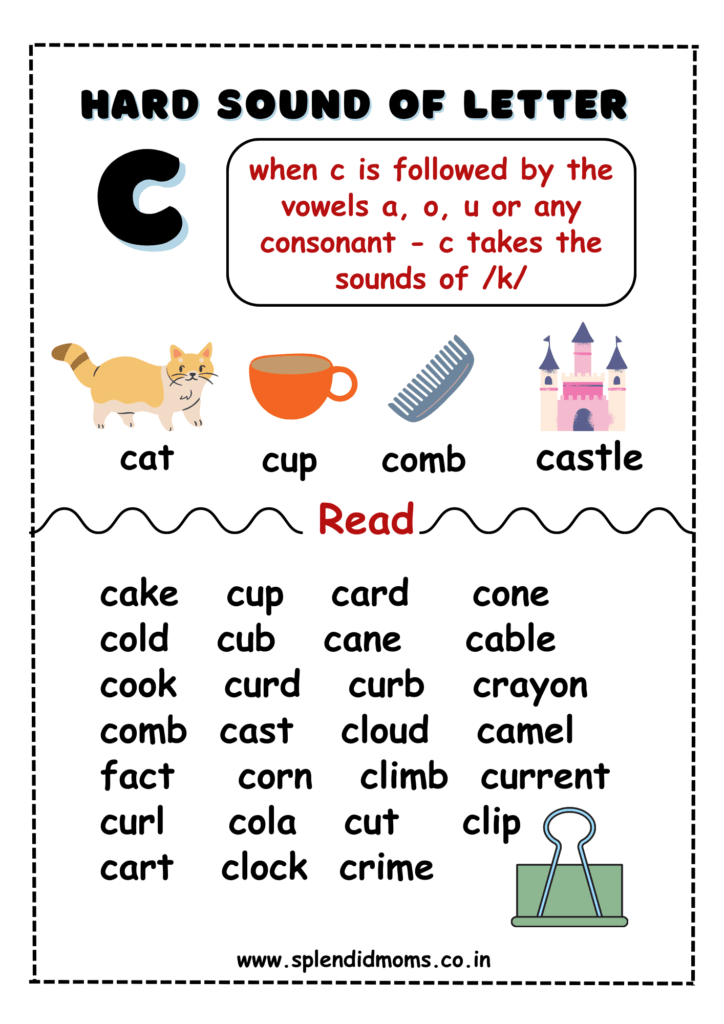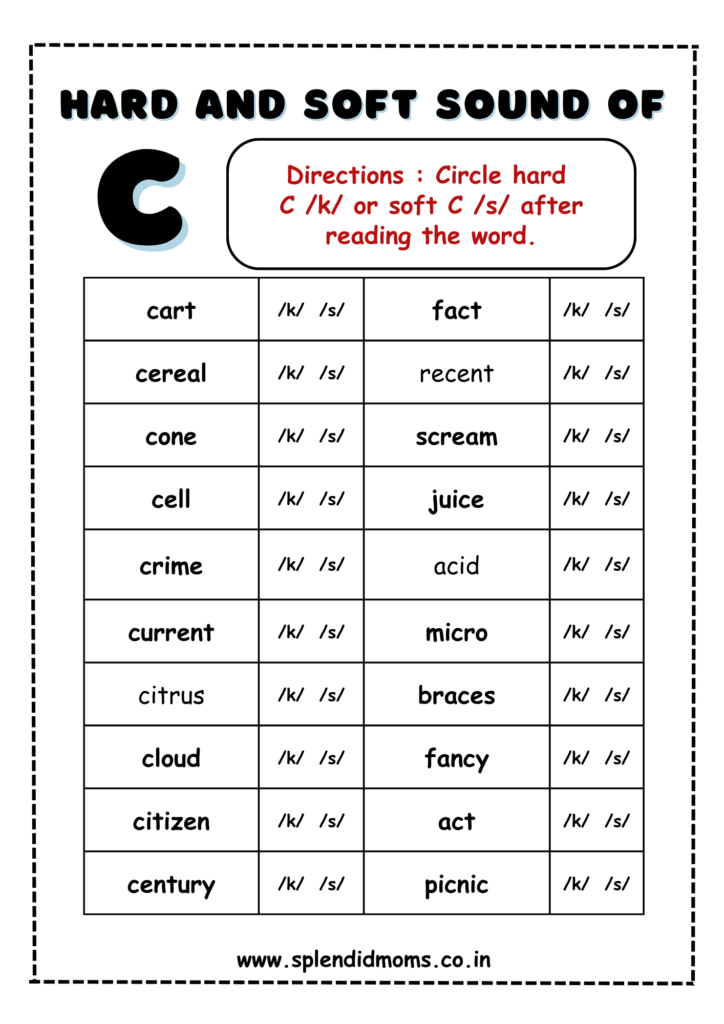Two sound of C - Hard c Soft c
(Disclaimer: This post contains affiliate links. If you make a purchase through these links, I may earn a small commission at no extra cost to you. As an Amazon Associate, I earn from qualifying purchases).

Introduction:
The letter “C” is a versatile and fascinating letter that can produce two distinct sounds. While this might seem confusing at first, understanding the difference between these sounds is essential for improving reading skills and expanding vocabulary. In this blog post, we will explore the two sounds of the letter “C” and provide simple examples to help you grasp their importance.
Soft Sound of “C”:
When “C” meets the vowels “e,” “i,” or “y,” it whispers a soft sound, just like a gentle breeze. Let’s explore this magical sound with some examples:
Cent: Have you ever heard of a “cent”? It’s a small coin worth one hundredth of a dollar. The word is pronounced as “sent,” with a soft, hushed “s” sound at the beginning.
Circle: Imagine drawing a perfect “circle.” It’s a round shape with no corners. Pronounce it as “SUR-kuhl,” with the soft sound of “s” at the beginning.
City: A bustling “city” is a large urban area with tall buildings and busy streets. Say it as “SIT-ee,” with that soft “s” sound.
Hard Sound of “C”:
Now, let’s explore the bold and powerful side of “C” when it encounters consonants or the vowels “a,” “o,” or “u.” Brace yourself for some exciting examples:
Cat: Meet a cute and cuddly “cat.” It’s a small furry animal that loves to play. Pronounce it as “kat,” with a strong “k” sound.
Cup: Quench your thirst with a refreshing drink from a “cup.” Pronounce it as “kuhp,” with that strong “k” sound.
Clock: Keep track of time with a ticking “clock.” Say it as “klok,” emphasizing the powerful “k” sound.
When to Teach this Topic to Kids:
Introducing the two sounds of “C” to kids is an important step in their early reading journey. It is typically taught when they have a solid grasp of letter recognition and basic phonics skills. This topic is suitable for children in the early stages of learning to read, usually around kindergarten or first grade.
Why Learning this Rule is Important:
Understanding the two sounds of “C” has numerous benefits for young readers. Here’s why it’s important:
Vocabulary Expansion:
Learning the soft and hard sounds of “C” allows kids to read and understand a wider range of words. It helps them build their vocabulary and comprehend various texts more effectively.
Correct Pronunciation:
Knowing when to use the soft or hard sound ensures that kids pronounce words correctly. It helps them communicate clearly and confidently.
Spelling Accuracy:
Recognizing the two sounds of “C” assists children in spelling words accurately. It provides them with a valuable rule to follow when determining whether to use “C” or another letter, such as “S” or “K.”
Conclusion:
Congratulations, young language adventurers, for discovering the secret behind the letter “C” and its two fascinating sounds! You have embarked on an exciting journey that will enhance your reading skills and expand your word power. Remember, learning the soft and hard sounds of “C” opens doors to a world of words and improves your ability to communicate effectively. So, keep practicing, exploring, and embracing the magic of language!
- want to learn few more spelling rules ?
- To sounds of C
- Two sounds of G
- Plural spelling rules
- Silent E
To make things even easier for parents, there are also some excellent spelling books available that turn practice into play. Below, I’ve rounded up some of the best resources that can support your child’s spelling journey at home.
Spelling Workbook for Kids Ages 5–7: Learn and Practice Over 350 Essential Words
This workbook covers 36 units with 10 new words in each, adding up to over 350 essential spelling and sight words. Activities like tracing, fill-in-the-blanks, rhyming, and word hunts reinforce learning while keeping kids engaged. With a large, kid-friendly format and cute designs for coloring, this workbook is ideal for children in kindergarten through second grade.
Scholastic Panda Education: Spelling Weekly Practice for 1st–2nd Grade
This workbook focuses on high-frequency sight words that form the backbone of children’s reading. With tracing, writing practice, and fun doodles to color, it keeps kids motivated while giving them a solid foundation in spelling and word recognition.

